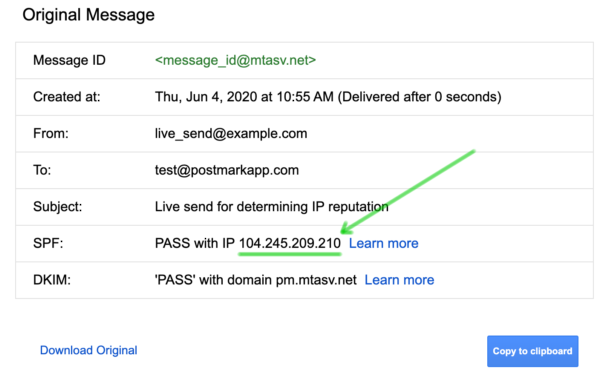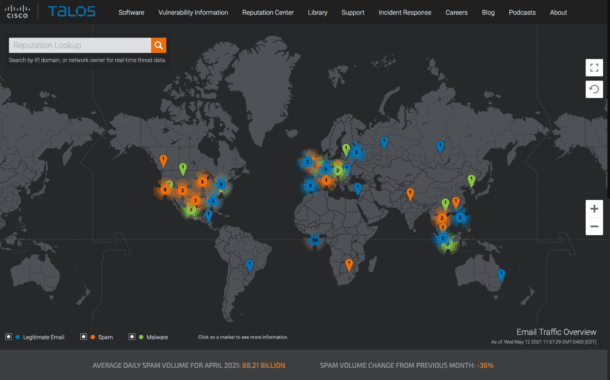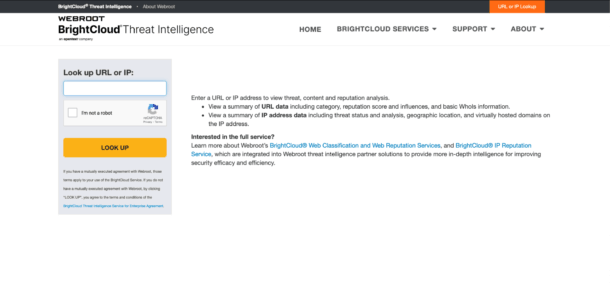How to check your sending IP reputation
You do your best to follow the rules and send emails that make both customers and inbox service providers happy. But until you check under the hood, it can be hard to tell if your work has paid off.
If you want to monitor or improve your email deliverability, IP reputation will be one of your first stops. Thankfully, there are quick ways to get a gauge on what mailbox providers think of your sending IP.
What is IP reputation? #
Internet service providers (ISP) are a bit like bouncers outside of your subscribers’ inboxes. It’s their job to assess anyone who wants to come in and decide if they should let them past the front door.
Bouncers, just like ISPs, want to maintain a safe and interesting space. They may bounce or reject people based on what they've done in that club in the past, and they may accept people based on who they're associated with. In the same way, your sending IP address has a history and associations that receivers keep track of to know whether your message deserves to pass the velvet rope.
Just like in real life, reputations are built on past actions, both good and bad. Inbox providers are looking at many different data points to form their opinion. For example, a history of low spam complaints and bounce rates makes your sending IP more trustworthy, while a high number of complaints will put a dent in your IP’s credibility.
If you use a dedicated IP, then the reputation is based solely on your actions. A shared IP’s reputation, on the other hand, is built on the activity of all senders that are using the same sending IP. Internet Protocol addresses (IP addresses) are unique identifiers that define a location on the internet. Think of your email sending IP as the address that pinpoints the sending server for your emails—and your IP reputation as the level of trust inbox providers have in that sending IP.
It’s important to note that every receiver (including middlemen like forwarders, third party spam filters, third party block lists, etc.) will have their own experiences and data associated with your sending IP address. This means there’s not just one overall IP reputation, and depending on the relationship you have with each ISP, your reputation may vary significantly across all receivers
Why is IP reputation important? #
If you want your emails to make it to the inbox, you need a good IP reputation. While many factors can influence your deliverability, your IP reputation is a vital component for ISPs deciding if they trust you.
That's because the IP represents your sending environment, and knowledge about other senders and messages using that same sending environment allows receivers to make upfront assumptions about the quality of your mail, too. Ultimately, a good IP reputation means fewer bounces and faster delivery.
Assess your ESP’s sender standards #
Unless you have a high send volume and are eligible for a dedicated IP address, you’ll likely use a shared IP through your email service provide (ESP). Some ESPs might try to sell you on a false promise of a dedicated IP, but being on a shared IP with many high-quality senders typically improves deliverability by buffering effects when an inevitable sending mistake happens.
The caveat is that you need to be in good company to reap the rewards of a shared IP address. That means you should look at how your ESP maintains standards. It’s a good sign when creating your account involves completing questionnaires and replying to support messages. If they accept customers prone to spam complaints and excessive bounces, receivers will lower their opinion of the traffic coming from that provider's IPs.
P.S. We have a guide to evaluating email service providers if you need help making the right choice.
How to check IP address reputation #
If you want to check your IP address reputation, you’ll likely need to do a little investigating first. Luckily, it’s fairly simple to find your IP address. Then you can use third-party tools to assess your reputation. Here’s a breakdown of that process.
Find your primary IP for email sending #
First, you'll need to find out which IP addresses your messages are sent from. If you use custom SPF/DKIM authentication and have signed up for Google Postmaster Tools (you should!), refer to the “IP reputation” visualization to get a shortcut to finding your sending IPs as well as understanding their reputation according to Google.

If you’re not using Google Postmaster Tools or there’s no data available there, then open any message sent from your ESP (not triggered through any “testing” feature, since tests sometimes use different IPs than live sends), and view the message headers.
What those headers look like may vary based on the inbox provider, but the simplest way to locate the sending IP (especially in Gmail) is to look at the SPF authentication results.

In the raw, unformatted headers, you should see something like this:
Authentication-Results: spf=pass (sender IP is 104.245.209.210)
or this:
Received-SPF: pass (domain of example.com designates 104.245.209.210 as permitted sender)
If you’re sending over a shared pool (multiple IPs), open as many sent messages as you can from the past week. Looking at messages sent more than a couple of weeks ago could yield inaccurate results since some ESPs move customers to different IP pools periodically.
Make a note of the various IP addresses you see in those headers, and you’ll likely even notice a pattern that they’re all in the same range. For example, if I see that I’m sending over 50.31.156.115 and 50.31.156.122, I'll get additional insight by checking the reputations of 50.31.156.[116-121].
Use IP checker tools #
Now that you know your sending IPs, there are public IP reputation tools you can use to understand their reputation for multiple receivers. Keep in mind that these tools might hand out “good” or “neutral” ratings to most IPs when there’s limited data. The most insight comes from whether the IP is less than “neutral” (“bad” or “poor”), meaning this IP definitely needs the attention of a deliverability professional or your ESP, stat.
5 tools to check IP reputation quickly #
Google Postmaster Tools #
With Google Postmaster Tools, you can see detailed information about the messages Gmail receives from your domain. Beyond IP reputation, Postmaster Tools will show your domain reputation, spam rates, encryption usage, and email authentication success/failure rates.

Sender Score by Validity #
The most popular tool to check IP reputation is likely Validity’s Sender Score service. You just need to create a free account there to see enough data. Any Sender Score in the 90s is excellent, but anything lower (especially below the 80s) means you’ll want to reach out to your ESP as soon as possible to investigate and resolve.

Talos Intelligence by Cisco #
Another public lookup tool for IP reputation is Talos Intelligence by Cisco. You can use this site to look at different data points, but for IP reputation, refer to the “Web Reputation” grade. The IP reputation ratings include unknown, poor, neutral, and good.

BrightCloud’s IP List #
Comcast is known for referencing BrightCloud’s IP list, which tells whether there’s a perceived “threat” risk for your IP. Looking up your IP will return threat status and analysis, geographic location, and virtually hosted domains.

MultiRBL #
Beyond reputation, you may also want to know if the IP is currently on any notable anti-spam or blocklists (sometimes called “blacklists"). The quickest check for an IP is probably MultiRBL, and if you see a listing there, be sure to follow the link to the list’s website to check again directly (sometimes MultiRBL’s cache is inaccurate or delayed in marking de-listings).

Of course, many of these public blocklists may not affect reputation if who you’re sending to isn't referencing that specific list. There are countless blocklists in existence because anyone with a computer can make one, so it helps to do some research first (or talk to your deliverability team) if you’re curious whether a specific list is widely used and reputable.
Additional public block lists you can check that might not appear in MultiRBL include Proofpoint, Spamhaus, Symantec, and Office 365. By entering your IP into each of their forms, it will let you know whether the IP address is currently listed by these notable spam filters and block list services.
Email deliverability is an ongoing process #
Now that you’ve collected some data on your sending IP, what’s next? If you’ve found the IP to have some reputation issues, definitely reach out to your ESP to determine the work to be done to correct it. If your ESP is responsive, that’s a clue that this likely is a one-off situation. If they’re not though, this might hint at deeper reputation issues that may require an email provider switch.
If you’ve found your IP to be in good standing everywhere, you’re working with a top-notch sending environment that will allow your own good sending habits to shine! Continue to re-check your IP reputation regularly (once a month, or as concerns arise) in case there have been any changes.
In the same way you can’t take a single vitamin and be healthy for the rest of your life, managing your IP reputation once isn’t a deliverability fix. If you want to learn more about improving your IP reputation and deliverability overall, check out our guide to email deliverability.
Looking for a sender with great IP reputation? We’ve got you covered #
At Postmark, we take protecting our sending reputation seriously. Like really seriously. We vet every new customer and only support senders that follow email sending best practices. Period.
With this approach—and the help of our customers—we’ve built a pool of shared IPs with great reputation and top-notch deliverability, so that your emails make it to the inbox fast and reliably.



